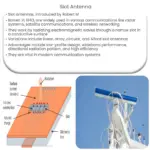What is TDM?
Time Division Multiplexing (TDM) is a digital communication method that enables multiple signals to share a single data transmission channel simultaneously. TDM is often used in telecommunications systems, such as phone lines, to transmit voice or data from multiple sources over a shared physical medium. It is a time-based technique that breaks up a high-speed data stream into several low-speed channels, each with its own specific time slot.
How does TDM work?
In TDM, each signal or data stream is given its own dedicated time slot in a repeated cycle. During this time slot, the signal is transmitted over the channel. Each time slot is usually very short, around a few microseconds, so the signals are transmitted in rapid succession. The receiving end then reassembles the signals based on their designated time slot. By sharing the same physical medium, TDM allows multiple signals to be transmitted simultaneously, resulting in more efficient use of bandwidth.
Applications of TDM
TDM is widely used in telecommunications systems, such as phone lines and digital subscriber lines (DSL). It is also used in videoconferencing, where multiple video and audio signals are transmitted over a single channel. TDM is also used in digital audio broadcasting to transmit multiple audio signals over the same frequency. Additionally, TDM is used in packet-switched networks to transmit data in a synchronous manner.
Example of TDM technology
One example of TDM technology is the T1 line, which is commonly used for voice and data transmission in North America. A T1 line consists of 24 separate channels, each with a data rate of 64 kbps. These channels are time-division multiplexed to create a data stream with a total bandwidth of 1.544 Mbps. Another example is the E1 line, which is used in Europe and other regions. The E1 line consists of 32 separate channels, each with a data rate of 64 kbps, and has a total bandwidth of 2.048 Mbps.



